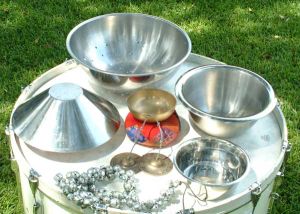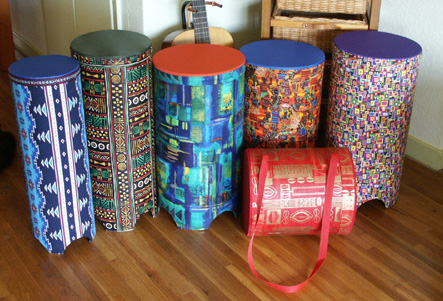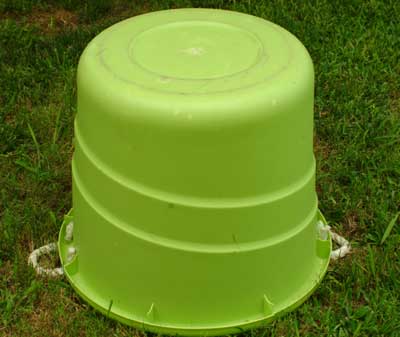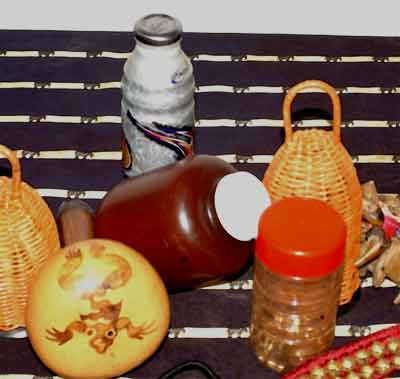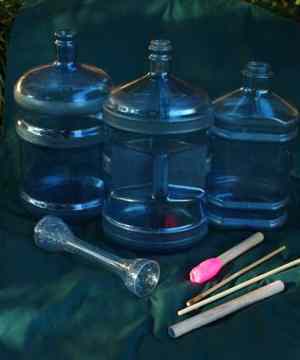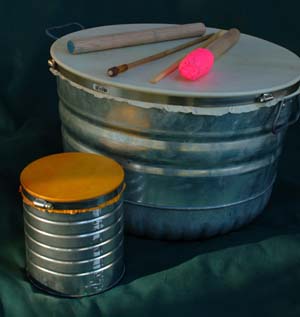 | |||||||||
| Learn more here... |
Jim Donovan's Drumming Facilitator & Teacher Trainings are designed to empower you to create your own transformational rhythm and drumming based events. You will learn the skills, concepts and philosophical foundation that will assist you in designing and facilitating meaningful, effective and successful experiences for any group you work with.
What are the prerequisites?
Jim Donovan's Drumming Facilitator & Teacher Training welcomes persons of all experience levels including those with no musical or teaching experience. You will not need to know how to read musical notation, nor will you need a background in music theory. The training is designed to take you as you are and give you the skill sets you need to begin creating your own rhythm based events. If you already have teaching, facilitating, speaking and/ or musical experience, you will be delighted to find how much you will be able to pull from your own experience and apply it to what you learn at the training.
The idea behind Jim Donovan's Training Programs is to give you practical education, experience and feedback in several key ways:
1. The training will be an immersion in the basic tenets of using rhythm as a way to help people learn about themselves.
1. The training will be an immersion in the basic tenets of using rhythm as a way to help people learn about themselves.
Jim Donovan's Drumming Facilitator & Teacher Training is designed for you to learn how to lead drumming circles, workshops and rhythm events in a way that maintains cohesion within your groups, while simultaneously opening a energizing space of learning, sharing and healing. The concept behind "Rhythm Renewal" is centered around our ability to use rhythmic events as a way of creating the conditions for people to experience a positive shift in consciousness and a sense of rejuvenation within.
Your experience will include foundation teachings on:
Your experience will include foundation teachings on:
- Inclusion regardless of ability
- Letting go of the need to be perfect
- Being present as a teacher/facilitator
- Serving the group
- Finding ways to effectively flow with change
- Learning the value of cooperation and non-competition within a group
- What to do with failure
- How to empower others and create community
2. You will be guided through a wide variety of tools and methods.
Each of the methods I show you are ones specifically designed for easy integration into your own field of specialty. My intention is to connect you with skill sets that you can assimilate and re-form according to your own desires. I will give detailed explanation, methodology and demonstration on an array of malleable rhythm modules.
Including:
- Basic drum circle facilitation skills including signals, body language, facial expressions, eye-contact, energizing the group, highlighting, stepping back, and sculpting
- How to perform a wide variety of malleable rhythm and voice modules
- How to weave your message into a rhythm module
- How to get multiple group rhythms going (and how to help them to stay on track)
- How to speak the language of the group
- How to serve the group in front of you
- How to inspire and hold the attention of the most unruly/apathetic groups
- How to build your own event from the ground up
- How to create rhythmic team building exercises
- How to harness the power of the voice as a way to enhance personal development
- How to use rhythm as a way enhance personal development
- How to create rhythmic leadership exercises
- How to teach the fine art of singing and playing simultaneously
- How to make complex rhythmic parts easy and accessible
- How to play the various drums and percussion commonly used in rhythm events
- How to use rhythm to lead health and wellness experiences
- How to use rhythm to lead educational experiences
- How to create an emotional connection with your audience
3. You will get feedback and guidance as you practice rhythm modules with the group. The great thing about learning in a group setting is that we have the opportunity to learn from each other. The training will provide ample opportunities for you to practice what you are learning, and then gather constructive critique from both myself and the other participants.
4. You will have an opportunity to map out your own event.
The training will include practical advice, methodology, feedback and opportunities for you to practice creating and mapping your own rhythm bases experience from start to finish. You will leave with an understanding of the key components needed to make your events successful.
5. You will be given an opportunity to understand why YOU desire to use rhythm as a tool and how you feel it will help you learn about yourself.
One of the most vital parts of this training is to be clear about the reasons about WHY you are doing what you are doing. We'll cover how to get clear about what your mission for your work is and how to fine tune it. A key component of working with passion is to design what you do in a way that consistently provides opportunities for you to learn and push your own boundaries.
Who should attend?
- Anyone interested in utilizing the power of rhythm & drumming
- Music Therapists
- Music Teachers
- Drum Circle Facilitators
- Therapeutic music makers
- Camp Counselors
- Alternative healers
- After school activity directors
- People who work with disadvantaged youth
- Social workers
- Disaster relief workers
- Church and spiritual group leaders
- Elementary educators
- Corporate Facilitators seeking new tools for their activity toolbox
What will you learn?
- How to enhance and hone your own personal facilitation/teaching style
- How to take your event from really good to one that is transformational
- How to create fail-proof events by empowering participants
- How to serve the group in front of you
- A wide variety of malleable rhythm and voice modules
- How to speak the language of the group
- How to build your own event from the ground up
- How to inspire and hold the attention of the most unruly groups
- How to create rhythmic team building exercises
- How to create rhythmic leadership exercises
- How to play the various drums and percussion commonly used in rhythm events
- How to weave your message into a rhythm module
- How to use rhythm as a means to enhance personal development
- How to use rhythm to lead health and wellness experiences
- How to use rhythm to lead educational experiences
What else will you get?
- A certificate of completion indicating that you are trained in Jim Donovan's Rhythm Renewal methodologies
- 19 hours of interactive training
- A clear explanation of the theories behind "The Rhythm Renewal" concept and why they consistently work so well
- An opportunity to practice and get feedback and coaching from Jim and other participants
- Specific effective techniques that will help you overcome pre-event nervousness
- A training manual that outlines the entire Rhythm Renewal Training program for your reference
- Tried and tested step-by-step foundation methodology
- World Rhythm Seeds Volume 1 CD Resource Rhythms
- Rhythmic Ear Training Volume 1 CD Call and response exercise CD
- Marketing tools, templates and tips for those wanting to create programs to sell
- Resources for additional reading, source rhythms and ongoing learning
- Planning templates for you to begin creating and enhancing your own rhythm based events
What is a rhythm based event?
A rhythm based event is one where you use rhythm as the catalyst to consciously create a desired result
Rhythm based events can take many different forms such as:
- Week long retreats
- Two minute rhythmic wellness interventions
- Classroom cultural lessons
- Ice breakers before a larger event
- Team building and leadership trainings
- Community drum circles
- Spiritual workshops
- Stress relief courses
The common thread in these any of these occurrences is that rhythm is one of the tools being used to assist you in relaying your broader concepts and meeting your goals.
What kinds of concepts and goals can be addressed and met with rhythm?
- Taking Chances
- Fear of Failure
- Stress Relief
- Interpersonal dynamics and working together as a team
- Learning to focus your attention at will
- Group empowerment
- Feeling like a part of a team
- Active listening
- Collaborative learning
- Interactive cultural learning
- Learn a sense of musical timing
- Hand eye coordination
- Small muscle development
- Fine motor skill development
- Build self esteem, sense of power
- Mood improvement, gaining energy
- Creating relaxation
- Having fun
- Create a sense of camaraderie
- Cooperation
- Non-competition
Why learn to teach and facilitate using rhythm?
1. It levels the playing field.
Level the playing field, remove the hierarchies, and learn to know each other on different terms. Creating music together creates lasting bonds between people unlike any other. By putting all of your participants on the level playing field of group drumming, watch how the hierarchies melt away and you each begin to see the importance of player in the room. Watch how interpersonal relationships become stronger through positive rhythmic interaction.
2. It creates a strong sense of team.
Create more effective team members by turning them into active listeners. Group rhythm unifies and creates a common purpose for your team and is the perfect metaphor for working together in harmony while highlighting the importance of the group dynamic.
Level the playing field, remove the hierarchies, and learn to know each other on different terms. Creating music together creates lasting bonds between people unlike any other. By putting all of your participants on the level playing field of group drumming, watch how the hierarchies melt away and you each begin to see the importance of player in the room. Watch how interpersonal relationships become stronger through positive rhythmic interaction.
2. It creates a strong sense of team.
Create more effective team members by turning them into active listeners. Group rhythm unifies and creates a common purpose for your team and is the perfect metaphor for working together in harmony while highlighting the importance of the group dynamic.
3. It encourages creative thinking.
When you drum, it demands that you think outside the box. Drumming uses both hemispheres of the brain. Each player learns how to balance their creativity and expression while supporting others in their own pursuits.
When you drum, it demands that you think outside the box. Drumming uses both hemispheres of the brain. Each player learns how to balance their creativity and expression while supporting others in their own pursuits.
4. It quickly brings focus and concentration to small and large groups alike.
Rhythm and drumming helps to bring immediate focus to any size group. Within moments, everyone is on the same page, letting go of worries, skepticism and concerns, and immersed into an enjoyable group experience.
5. It fosters cooperation instead of competition.
Your participants will feel camaraderie closer as they experience making music together. When all players are working in complete cooperation, and with full focus, extraordinary music results. Create a common ground and a solid sense of community by uniting participants as a team and feel the power of playing as one drum.
6. It melts stress.
Drumming is scientifically documented to quickly and safely help people release stress. With the first five minutes you will feel a significant shift in how you feel, and also how the group is better able to focus.
Drumming is scientifically documented to quickly and safely help people release stress. With the first five minutes you will feel a significant shift in how you feel, and also how the group is better able to focus.
7. It stimulates deep listening.
Group drumming demands that you learn to hear subtleness. You learn to hear more than one thing at a time. You learn to hear more than just yourself. It increases awareness of others while participants learn to listen and interact with each other.
8. It helps participants to find their own voice.
Learn the power of individual contribution. In their expression individuals make a unique contribution to the success of the entire group. Group drumming is the perfect metaphor for relationships in the workplace and is a cathartic way to enhance personal and self-awareness. Drumming with others with a group encourages self-expression and personal growth.
Group drumming demands that you learn to hear subtleness. You learn to hear more than one thing at a time. You learn to hear more than just yourself. It increases awareness of others while participants learn to listen and interact with each other.
8. It helps participants to find their own voice.
Learn the power of individual contribution. In their expression individuals make a unique contribution to the success of the entire group. Group drumming is the perfect metaphor for relationships in the workplace and is a cathartic way to enhance personal and self-awareness. Drumming with others with a group encourages self-expression and personal growth.
9. It is easy, energizing and enjoyable!
Percussion is RIGHT NOW. You pick it up, you strike it and it makes a sound. With the leadership skills you'll learn at the training, any group can be turned into a "percussive orchestra" within a very short time. Jim Donovan's programs specialize in building immediate energetic synergy within groups who usually take a long time to develop.
Percussion is RIGHT NOW. You pick it up, you strike it and it makes a sound. With the leadership skills you'll learn at the training, any group can be turned into a "percussive orchestra" within a very short time. Jim Donovan's programs specialize in building immediate energetic synergy within groups who usually take a long time to develop.
10. It can happen anywhere.
Conference hall, your business, auditorium, rec rooms, class rooms, outside (weather permitting), parking lots, barns, living rooms....
Jim has facilitated sessions in very diverse settings such as a woodworking sawmill, a juvenile prison, factory manufacturing floor, cafeterias...
Conference hall, your business, auditorium, rec rooms, class rooms, outside (weather permitting), parking lots, barns, living rooms....
Jim has facilitated sessions in very diverse settings such as a woodworking sawmill, a juvenile prison, factory manufacturing floor, cafeterias...
All you need is the ability to make loud music and seating for all participants.
